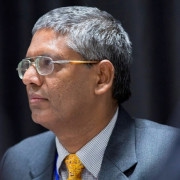Graph Theory and Optimization with Applications in Industry and Society
(DAAD Partnership Program 2016-2019)
Goal: The aim is at establishing a partnership program between
• University of Kaiserslautern (Technische Universität Kaiserslautern, TUKL), Germany
• Mindanao State University-Iligan Institute of Technology (IIT), Iligan, Philippines
• Tribhuvan University, Institute of Science and Technology (IOST), Kathmandu, Nepal
The main goal of this network is to strengthen the mathematical education in graph theory and optimization at the mathematics departments of the partner institutions and to promote and enhance the co-operation between these institutions beyond the current, already existing contacts. The focus lies on areas which are interesting from a mathematical point of view and which can be used to model real-world problems from industry and society. Examples of such problems include traditional questions of location, transportation, and work flow, but also disaster risk management, design and maintenance of water sewage systems, or the planning of radiation therapies arising in emergency planning, public administrations, or the health sector.
Optimization Models and Methods for Sustainable Development
(AvH Research Group Linkage Program 2016-2018)
Goal: The aim is at establishing a research research group linkage program in optimization between
• Department of Mathematics, TU Bergakademie Freiberg, Germany
• Department of Mathematics, Tribhuvan University, Kathmandu, Nepal
Earlier studies on optimization models, algorithms and applicability of the emergency issues show that various additional aspects have to be included, like transportation, logistics supports, planning, location, allocations, etc., for the sustainable development. The focus of this research plan lies on solving these challenging issues in emergency as well as day to day life. This research concentrates on the understanding of urban road networks with respect to its expansion and weakness. The multi-objective problems in widely accepted best contraflow networks will be considered in both discrete and continuous time scenarios. The optimization models with networks and vehicle routine with mixed modal public vehicle are considered with respect to an integrated as well as bi-level optimization approaches.
Tanka Nath Dhamala

Copyright © 2025